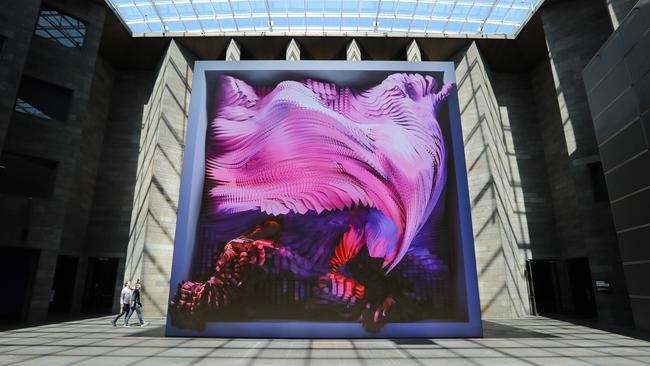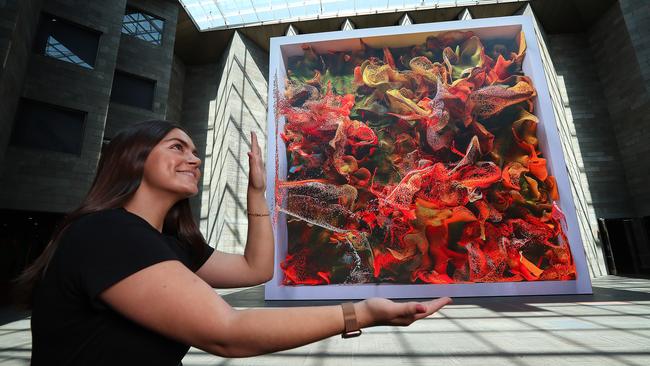Coronavirus: How culture survived the Covid pandemic
When the doors to Victoria’s cultural institutions closed under lockdown, one decision was the fast-track to salvation.

While the doors to Victoria’s cultural institutions were closed under the state’s harsh lockdown, creative streaming and digital programs helped keep the link to audiences open.
The Australian Centre for the Moving Image opened Cinema 3, a virtual cinema where audiences could rent selected films to watch at home, and access additional curated content.
ACMI director Katrina Sedgwick said the centre had talked about providing a similar service for years
“We realise there’s an audience out there who want to have that museum experience with their streaming,” she said.
She said Cinema 3 wouldn’t replace the experience of going to the cinema but there was a “hungry and eager” audience interested in films who also wanted access to “beautiful, connected, constellation of content”.
There’s a section of Australian films, and works from other filmmakers in the region, as well as works from small film festivals that can’t afford to access software on their own, including the Czech and Slovak festival currently available.
“It’s a great way to support those really diverse festivals,” Sedgwick said. “[They’re] small but with really keen audiences.”

Sedgwick said algorithms were currently directing people’s choice of content, often for commercial reasons, and Cinema 3 was an unusual juxtaposition of films chosen by humans for humans.
“We want to be part of a conversation, exploration of ideas,” she said.
Sedgwick said Cinema 3 was not about volume or undermining the importance and “magic” of attending a cinema
“I think audiences have recognised that we need to be active and rigorous about what we consume at home … I think we have changed and our needs have changed,” she said.
“It’s just been such a fascinating experience, what a time to live through … Amongst its terribleness it’s been eye-opening, The way these changes will remain with us, I think is so extraordinary.”
National Gallery of Victoria director Tony Ellwood said the gallery went into lockdown “full steam ahead” with a commitment to enhance and add to all of its digital interfaces, including the new hashtag #NGVEveryDay which recorded more than 26m hits.
The gallery also hosted realtime drawing classes, virtual tours of exhibitions, school programs which were picked up in the Middle East, and gained international press coverage when galleries around the world were laying off staff and facing closures.

The strongest connection to the NGV’s audience however was through a weekly email which contained different art forms centred around different themes – colour, emotion, millery, Asian culture.
Ellwood said the email now reaches more than 160,000 people who feel an “ownership” to the collection and look forward to the longform email which features between 8 to 12 works from the collection.
“[We] ended up being completely swamped with feedback,” he said. “I said to my colleagues I have never felt more in touch with the audience.”
Ellwood said the NGV will hopefully continue to send out one or two emails a month with the responses demonstrating the comfort many people take from art.
Museums Victoria chief executive Lynley Crosswell said MV’s digital strategy allowed it to pivot and focus activities under the banner of Museum at Home within a week of closing.
“The whole purpose was just making sure we stayed connected with the community,” she said.
The physical doors were shut in the longest closure in Museums Victoria’s 166 year history but almost 20 million people visited online since the digital Museum at Home program launched in March.

The program recorded more than 2.8m video views, 140,000 teachers and parents accessed the educational content and staff created more than 110 activities for children and families.
Museum at Home had a branch for play-based learning activities and another for learning, both of which Crosswell said were welcomed by parents and teachers while everyone was working from home and schools were closed.
“We were all really pleased with the responses and a little bit surprised too at the extent of it, just really pleased we could continue to connect with the community and provide that service,” she said.
“Truly the takeup was remarkable and we intend to absolutely keep this going.”


